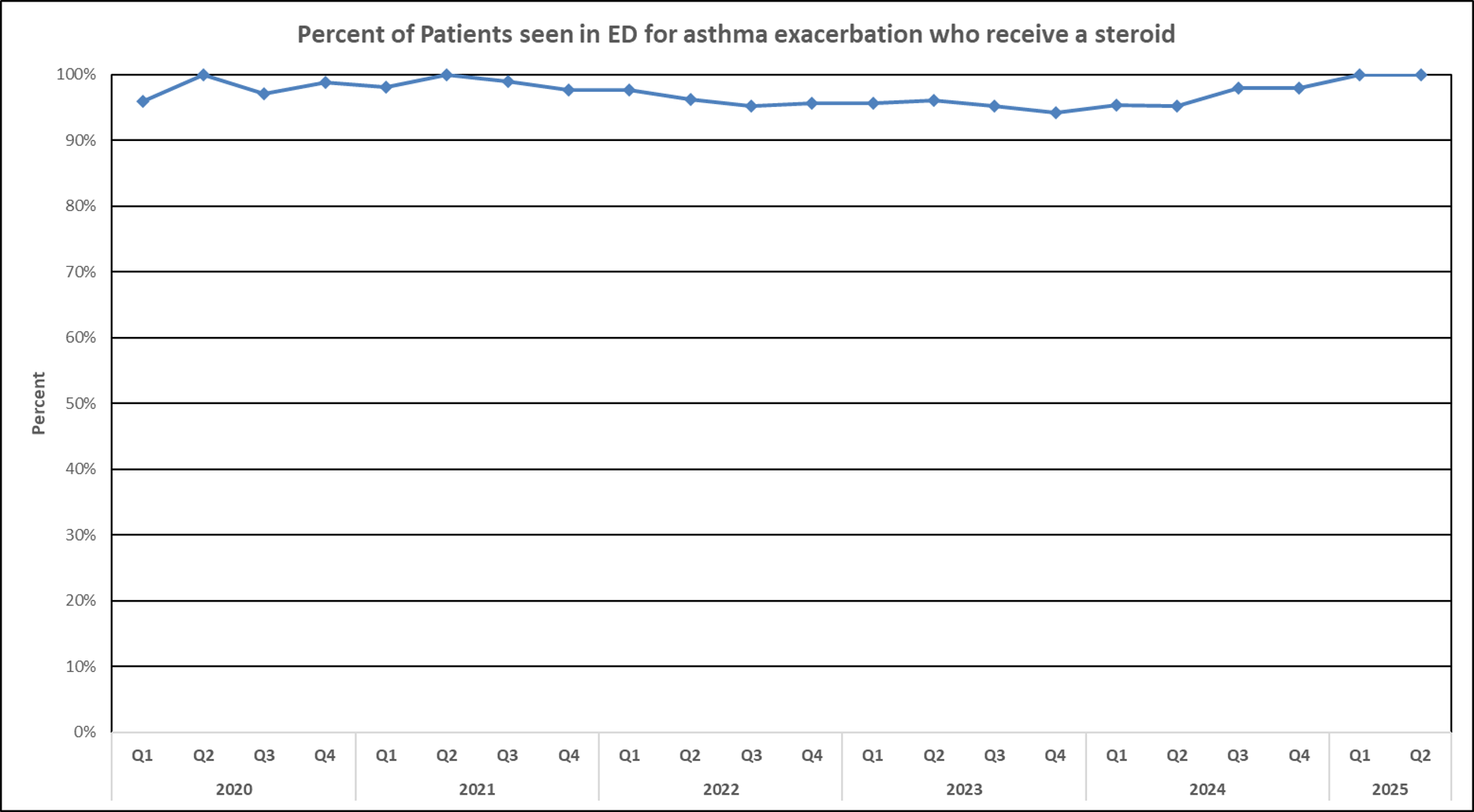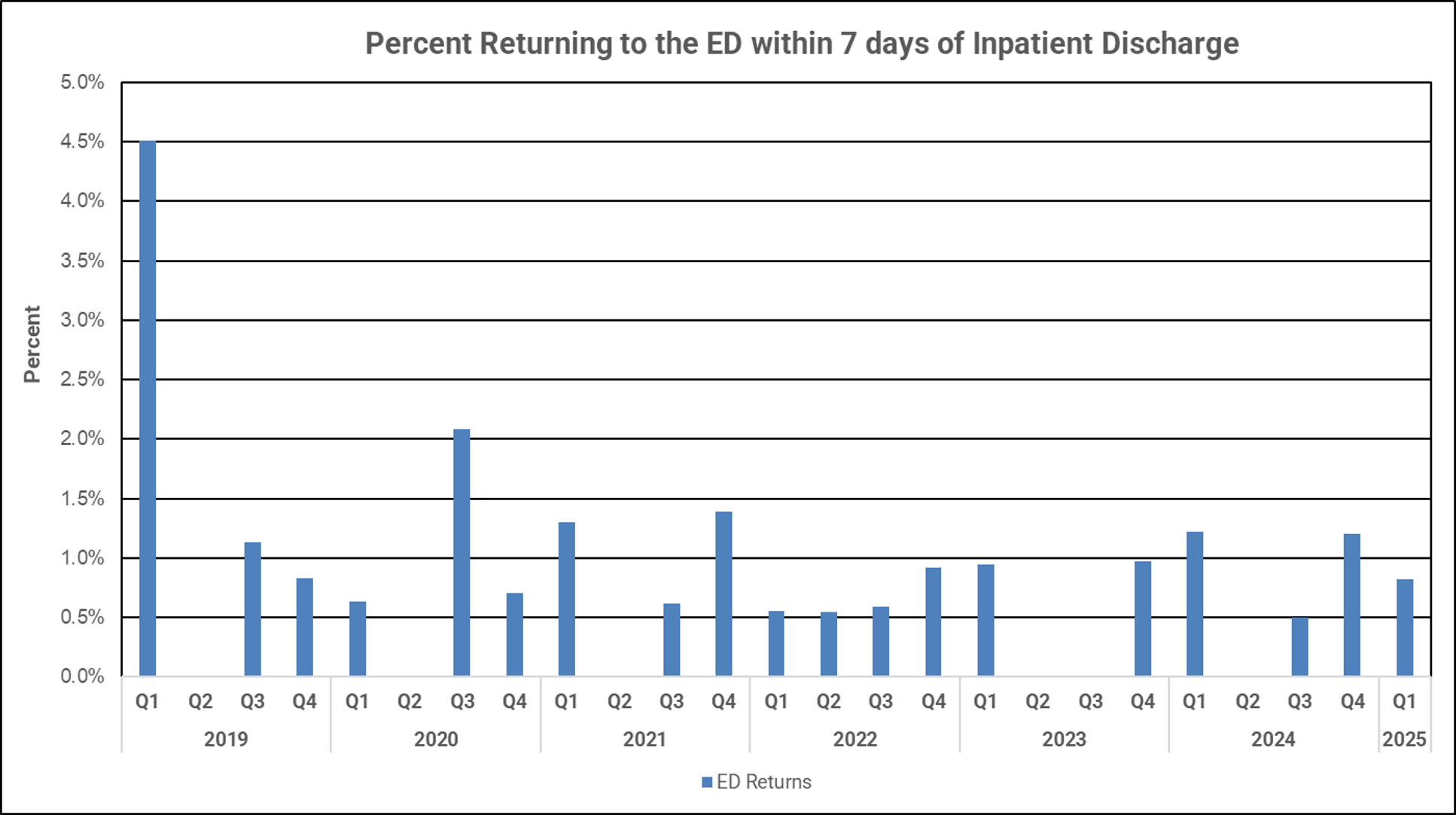Clinical Outcomes
Clinical outcomes are changes in health that can be both measured and followed. They go beyond simply providing safe care. They can take the form of many different aspects of health care. Clinical outcomes, however, should focus on what is important to the patient and their caregivers. Some examples of clinical outcomes include days with symptoms of illness, cancer freedom, quality of life or reduced days in the hospital. Other clinical outcomes could include preventive measures, such as vaccinations, or measures to maximize health, such as healthy weight management.
What Is the Project and Why Is it Important?
Asthma affects nearly 8% of children in Ohio, making it a big health concern. Managing this chronic condition requires help from various specialists, including primary care doctors, asthma experts and sometimes emergency care providers.
Asthma can sometimes flare up, leading to increased symptoms such as coughing or wheezing. During these episodes, a child may require urgent medical attention to prevent severe complications. Regular check-ups and a complete care plan are crucial to manage asthma and provide the best care for children with this condition.
At Nationwide Children’s Hospital, we implemented a large quality improvement initiative involving clinical stakeholders from across the hospital. This initiative focuses on improving specific areas critical to the care of our asthma patients.
How Are We Doing?
Nationwide Children’s expanded options for asthma care including a primary care asthma specialty clinic (ASC) where you can get care at your local doctor’s office with a clinic dedicated to asthma. Regular follow-up visits can help prevent visits to the Emergency Department (ED). On average, 150 patients visit the ASC monthly.
When asthma patients need to visit the ED, we ensure they receive the necessary medications. The chart below illustrates our consistent performance. At least 95% of patients in the ED for asthma exacerbation received steroids (one of the most effective lines of treatment) over the last 5 years.

We make sure hospitalized patients receive the necessary care to safely return home, minimizing the need for readmissions. As shown in the chart below, our rate of return to the ED following an inpatient admission for asthma is very low.

What Are We Doing to Improve?
Nationwide Children’s developed a robust program to provide meaningful asthma education to families. This initiative ensures that families are well-informed about managing asthma.
When asthma is difficult to control, we offer specialty services on-site, as well as community-based services such as school-based health programs and homecare. These services provide comprehensive support to children with asthma.
We established clinical pathways to ensure providers consistently follow standards of care when patients are in the emergency department or admitted to the hospital. These pathways help maintain high-quality care and improve outcomes for our asthma patients.
How Can Patients and Families Help?
- Talk with your provider: Discuss any asthma concerns with your health care provider to ensure you understand the condition and the treatment plan.
- Attend follow-up visits: Regularly attend follow-up visits to monitor asthma control and adjust treatment as needed.
- Review your asthma action plan: Go over your asthma action plan with your provider. Make sure you know how to manage symptoms and what to do in case of an asthma attack.
- Monitor symptoms: Keep track of asthma symptoms and triggers and report any changes to your health care provider.
- Follow medication plans: Follow the prescribed medication regimen and use inhalers or other treatments as directed.
- Educate Yourself and Your Child: Learn about asthma management and teach your child how to recognize symptoms and use their inhaler properly.
- Create a Supportive Environment: Reduce exposure to asthma triggers at home, such as dust, smoke, and pet dander.
By actively participating in the care process, patients and families can help manage asthma more effectively and improve health outcomes.
